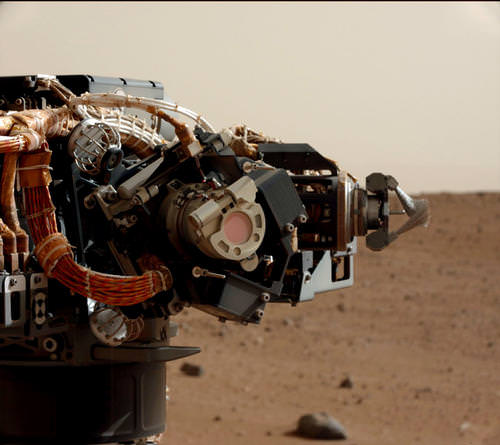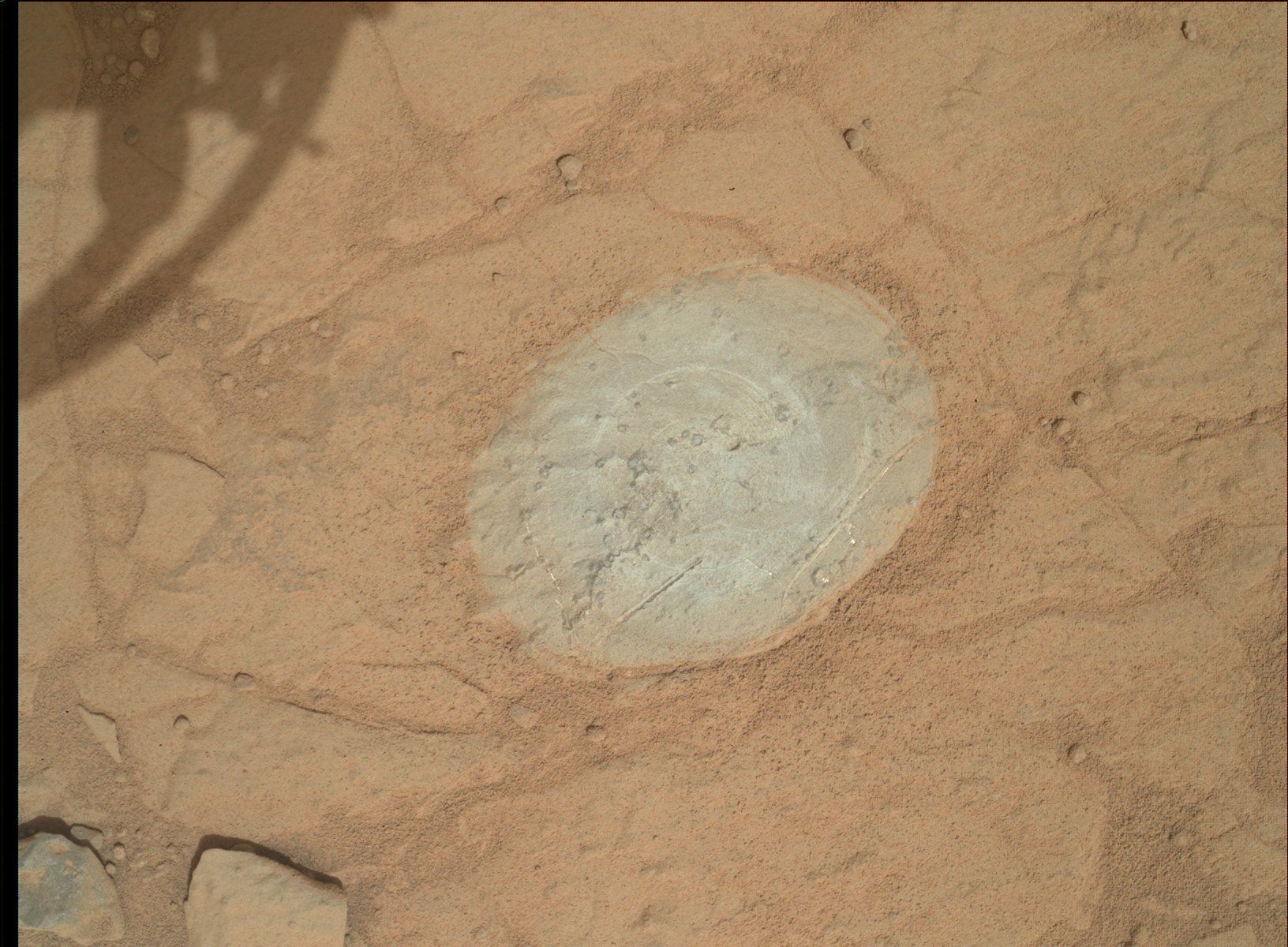It’s a bit dusty on Mars, and so the Curiosity rover has now cleaned up a little spot. For the first time ever, the newest Mars rover has used its Dust Removal Tool.
“The underlying rock and the windblown dust on top of it are made of different material,” the @Mars_Curiosity Twitter feed explained. “Analysis to come.”
It will be interesting to find out what the dark circular features are in the rock. The target areas that was cleaned is named “Ekwir_1,” and it is on a rock in the “Yellowknife Bay” area of Mars’ Gale Crater. The rover team is also evaluating rocks in that area as potential targets for first use of the rover’s hammering drill in coming weeks.
The Dust Removal Tool is a motorized, wire-bristle brush designed to prepare selected rock surfaces for enhanced inspection by the rover’s science instruments. It is built into the turret at the end of the rover’s arm, visible in the image below.

The science team said that choosing an appropriate target was crucial for the first-time use of the Dust Removal Tool.
“We wanted to be sure we had an optimal target for the first use,” said Diana Trujillo of NASA’s Jet Propulsion Laboratory, Pasadena, Calif., the mission’s activity lead for the Dust Removal Tool. “We need to place the instrument within less than half an inch of the target without putting the hardware at risk. We needed a flat target, one that wasn’t rough, one that was covered with dust. The results certainly look good.”
The Dust Removal Tool was built by Honeybee Robotics, which also built the Rock Abrasion Tool for the Spirit and Opportunity rovers.
Larger images and more info about the brushed area on Ekwir are online here and here.
Source: JPL


How the( rectengular) holes (lover, left) would have been created ?
Were they a sign of ancient water; or ?
If they were a sign of ancient water, the science community would, once again, be in an uproar about water on mars ^^ I hear no such uproar 🙁
It could merely be natural, or scoops left behind from Curiosity examining the dust – to make sure it was safe for the Dust Removal Tool to use with ^^
Either way, I’d like to know for certain too
Umm… I don’t see the ‘rectangular holes’ you refer to… instead I see at the lower left of the top image, two rectangular shaped rocks on the surface! A matter of perspective? Much like looking at craters from orbit that at first glance, appear to be mounds instead of surface indentations, which is due to sun angle perception….
Thanks…
The perspective seems misled me !
yk
Subject: [universetoday] Re: Curiosity Tidies Up a Bit on Mars
Correction on my part. I found this image.. which explains the ‘holes’? http://www.nasa.gov/images/content/717676main_pia16566-full_full.jpg
Its already thought that ancient mars had plenty of water, including oceans.
I want to make a suggestion for these curiosity’s posts: always put a link to the full-resolution images.
Thanks!
The brush mechanism that cleared the sample area also apparently scraped circular patterns in the underlying rock…. indicating they are composed of a fairly soft material. Like a very loose or soft sandstone.
How about… a micro gas/steam injected turbo jet engine mounted on the end of the arm? So you want to ‘dust bust’ Curiosity and this whole deposit? No problemo… we’ll land next to Curiosity and do the upgrades, clear sample collectors, repair a/r… kick the tires… Ha Haa!
And what’s this droplet thingie in the bottom right ‘corner’ of the circle?
It is also on the other photo.
i’m betting the dust on Mars is homogeneous, planet wide.
Looks like lake bottom layers.
I have to state the obvious but you know the geeks at JPL were probably just ecstatic after this test as well as they should be… what did you do today!